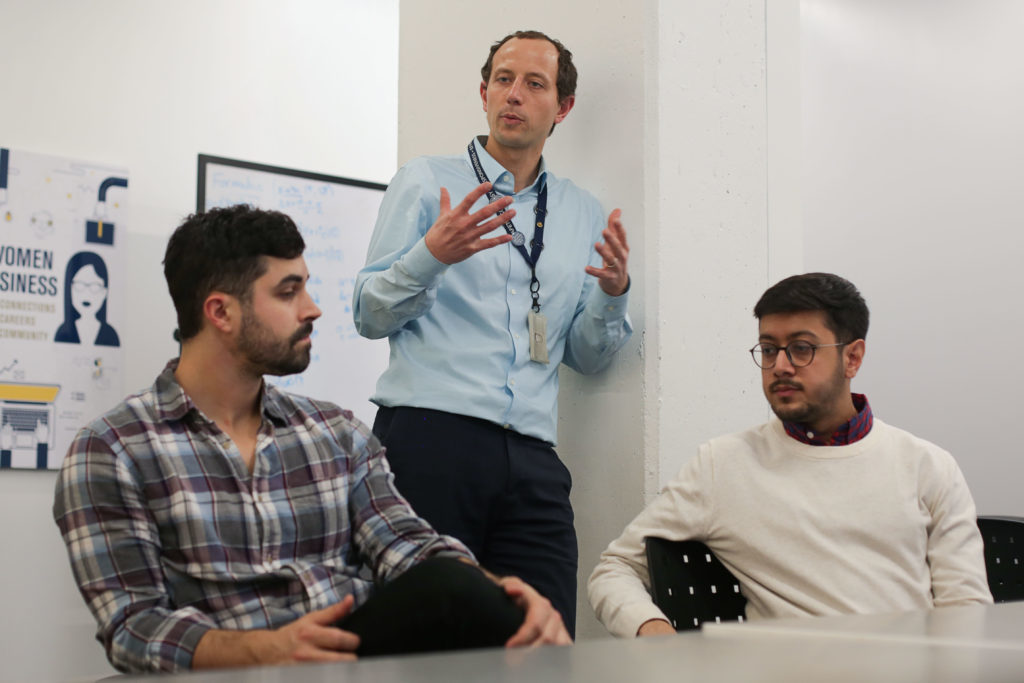A group of engineering students is working to make one of GW’s residence halls more sustainable.
GW’s chapter of the Association of Energy Engineers said they will collaborate with administrators to explore making Amsterdam Hall a LEED-certified building. If an audit conducted this spring shows the building can be renovated to meet qualifications that show it is cost effective and energy efficient, students said they will work with officials to pursue the certification.
The chapter held its first open meeting for students interested in the project Friday, where five students attended an hourlong meeting. Students said the timeline for the project will be determined after the group completes the inspection next semester.
There are currently 11 LEED-certified buildings on campus, including the Science and Engineering Hall and the Textile Museum.
Andy Ludwig, the staff adviser for the engineering group and the manager of energy and environmental projects, said he is working with the student engineering group to determine whether a LEED certification is feasible for Amsterdam Hall. If the audit conducted by students shows that the benefits outweigh the price of the project, he said the chapter will work with officials to pursue the certification.
He said officials have constructed new buildings with sustainability in mind, but it is more difficult to update older buildings to comply with LEED standards. SEH and District House, which opened in 2015 and 2016, respectively, are both LEED certified.
“The challenging thing for existing buildings is, often to get where they need to be on the energy side, you need to make some big investments and you need to understand what the roadmap is going to be to get there,” Ludwig said at the meeting on Friday.
Ludwig said each member of the group will research different LEED standards to determine where Amsterdam must improve. He said that to achieve LEED certification, a building must meet an Energy Star score of at least 75 – meaning a building is in the 75th percentile of similar-sized buildings for sustainable practices. He said the Energy Star score is determined by factors like water efficiency and indoor environmental quality.
Ludwig said the Environmental Protection Agency updated its scoring system this year to account for new technological advancements which set Amsterdam Hall back about 20 points.
“Amsterdam last year was at 73, just a hair off of hitting the 75 threshold,” Ludwig said. “I think it is in the 50s now, so a lot more needs to be done.”
University spokesman Tim Pierce said Amsterdam Hall was built in 1997, three years before LEED certification was created in 2000 and about a decade before the University committed to reaching LEED-silver certification or better for new construction and major renovation projects in 2007. He said officials will continue to look at how on-campus buildings can be updated to be more energy efficient.
“We look forward to receiving the results of their audit,” Pierce said in an email. “We will use the results of the audit as we consider future renovation projects. We undertake renovation projects with a goal in mind of making campus buildings more efficient and sustainability-friendly.”
Pierce added that because the project is in its early stages, the University has “no other updates at this time.”
Senior Jacqueline Hart, the president of the Association of Energy Engineers, said members of the group will research categories like energy and atmosphere, indoor environmental quality, location and transportation, water efficiency and materials and resources.
She said the group chose to focus on Amsterdam because the building’s metering system makes it easier to monitor than other sites. But Hart added that it may be more challenging to achieve LEED certification for Amsterdam because the building will likely require a series of renovations to make it more sustainable.
Hart said that once the audit identifies what areas need to be upgraded, the organization will present its findings to the University in the spring.
“If the audit does say that it is feasible for LEED certification, that would be more on the GW end rather than our end to see what they do with that information,” she said. “It would be up to them to take it and invest in that and, from there, invest in a LEED certification.”




